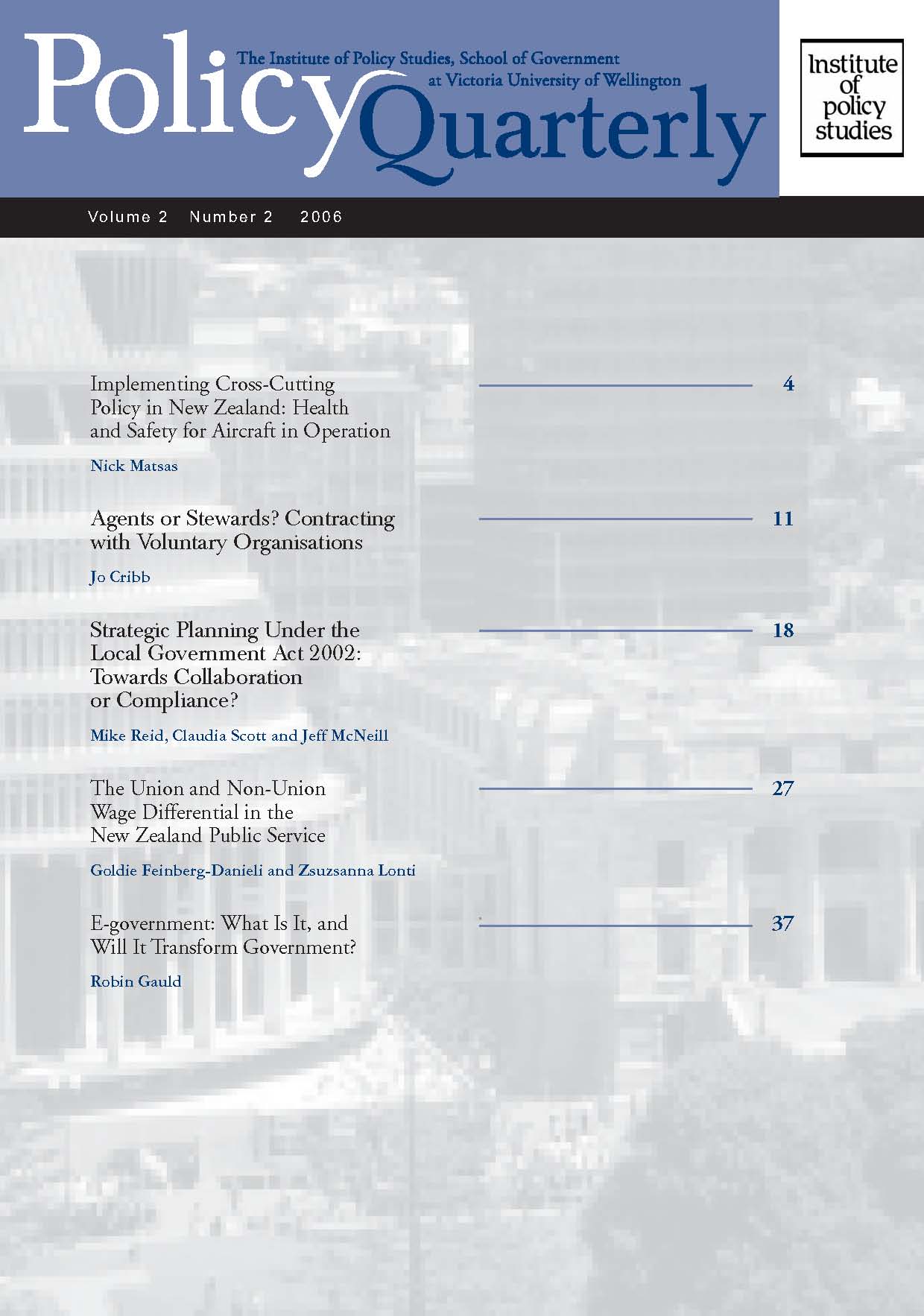The union and non-union wage differential in the New Zealand public service
DOI:
https://doi.org/10.26686/pq.v2i2.4194Keywords:
New Zealand Public Service (NZPS), State Services Commission’s (SSC), Wage bargaining, union spillover effect, unionisation ratesAbstract
What do unions do? The major objective of unions is to improve the terms of conditions of employment for their members. At the same time, unions have a considerable impact on the employment conditions of not only their own members but non-unionised workers as well. One of the most important employment terms unions negotiate is wages. As a result, wage bargaining has been identified as a primary function of unions, and differences in wages between union and non-union members are considered an important measure of union power. In most countries this differential is called the ‘union/non-union’ wage differential. In New Zealand, however, there are employees who are union members but are not covered by collective agreements, contrary to the more common occurrence in other countries (e.g. the United States and Canada), where non-union members are often covered by collective agreements. Therefore, in New Zealand the differential should be more precisely called the ‘collective versus individual’ wage differential. In this article we focus on the raw ‘collective’ wage differential, but due to convention we still call it the ‘union’ wage differential.
Downloads
Downloads
Published
Issue
Section
License
Permission: In the interest of promoting debate and wider dissemination, the IGPS encourages use of all or part of the articles appearing in PQ, where there is no element of commercial gain. Appropriate acknowledgement of both author and source should be made in all cases. The IGPS retains copyright. Please direct requests for permission to reprint articles from this publication to igps@vuw.ac.nz.



